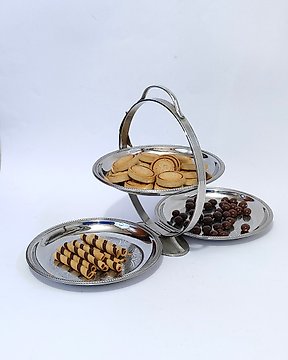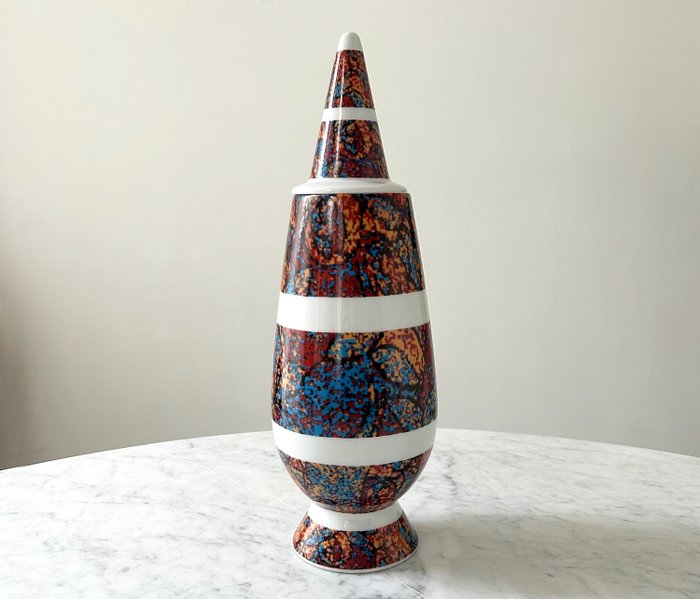
Alessi - Ufficio Tecnico Alessi - Soporte para pastel - Soporte para pasteles de mercurio - Acero
N.º 81976585

N.º 81976585

In 1990 Officina Alessi acquired the rights to the 'Tendentse' project that concerned ceramics. Initiated in 1985 by Ettore Sottsass, Adolfo Natalini, Andrea Branzi and Alessandro Mendini, the project aimed at experimental research into handmade objects and their 'emotional content', which could inform and inspire the design of mass-produced objects. Ceramics had been selected because of the ancient origins of the medium's forms, decorations and processes. The results of first experiments were objects forming the initial 'Tendentse' collection launched in 1989.
Following Alessi's acquisition of the 'Tendentse' project, experiments focussed on the ceramic vase, 'one of mankind's most ancestral wares' (A. Mendini, 'The 100% make-up', p.118, in: Alessi Design factory, 1994). In 1992, the firm released ten thousand vases from 'The 100% make-up' series which formed a spectacular highlight of the 'Tendentse' collection. All vases were wheel-thrown and cast in white porcelain to one basic design by Alessandro Mendini. Identical in form, colour and material, they began their life as most of mass-produced objects do. The similarity ended there however, as the vases were then decorated with one hundred different designs commissioned from one hundred artists, architects and designers from Europe, Africa, Asia and America. Each design was copied on one hundred vases, each vase being individually numbered and stamped with names of all contributing designers. This vase is the 67st design of the 100 designs created.
So there are 100 designers who created a design and 100 of each design were made, amounting to 10,000 vases.
Eduardo Pla ( Buenos Aires , 1952 - 14 December 2012 ) was an Argentine visual artist and is considered one of the forerunners of digital art in Latin America . Italo-Argentine lived in Europe and the United States for more than 20 years , until he returned to Buenos Aires , Argentina in 1996 . 1
He studied architecture, audiovisual communication, design and urban planning and received a master's degree from the European Institute of Design in Milan , Italy . He was a pioneer in the use of electronic-digital systems in art , made video clips early on and learnt the use of videographics and 3D animation . He had links to fashion through digital design on fabrics .
He has received several awards. These include the 'Excellence Award in Computer Art' (1988, New York, USA), 'First Prize in Art Addiction, The Venice Autumn Annual' (1999, Venice, Italy) and 'First Prize in the Centennial National Sculpture Competition of the City of Neuquén' (2004, Neuquén, Argentina).
In 2011, as Pla turned '40 years in art', he held a mega multimedia exhibition at the Recoleta Cultural Centre and launched the book 'Pla, 40 years in art' at El Ateneo Grand Splendid.
In excellent condition, has only stood for decoration - including original documentation ans packaging
Height: 39.5 cm
Width: 13.5 cm
Alessandro Mendini
Alessandro Mendini was born in Milan in 1931. He has edited Casabella, Modo and Domus. He was awarded the prize Compasso d'Oro. Among his most significant works were the Groninger Museum of Groningen, the Casino of Arosa and the Forum of Omegna. He reinvented the Alessi image for whom he has been meta-projectual consultant. He has been a designer, an architect and an image consultant for companies like Philips, Swarovski, Swatch and Bisazza. He died on 18 February 2019.
Cómo comprar en Catawiki
1. Descubre algo especial
2. Haz la puja más alta
3. Paga de manera segura